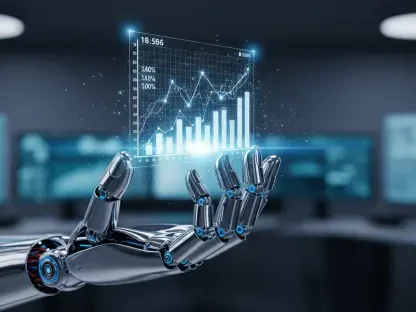I’m thrilled to sit down with Vijay Raina, a renowned expert in enterprise SaaS technology and software design. With his deep expertise in tools and architecture, Vijay has been at the forefront of transformative trends in automation and artificial intelligence. Today, we’ll dive into the evolution of robotic process automation (RPA), the rise of agentic AI, and how these technologies are reshaping the way businesses operate. Our conversation will explore the practical impacts on workflows, the importance of human oversight, and the balance between innovation and governance in enterprise settings.
How would you describe robotic process automation (RPA) and its role in enterprises up to this point?
RPA, at its core, is about automating repetitive, rule-based tasks that don’t require much human judgment. Think of things like data entry, invoice processing, or generating routine reports. Over the years, enterprises have leaned on RPA to streamline back-office operations, reduce errors, and cut costs. It’s been a game-changer for boosting efficiency in areas where speed and accuracy matter most, allowing employees to offload mundane work and focus on higher-value activities.
What’s driving the transition from RPA to agentic AI, and how do these two approaches differ?
The shift to agentic AI is really about moving beyond rigid automation to something more adaptive and intelligent. While RPA excels at following predefined steps, agentic AI can handle tasks that involve judgment, context, and decision-making. It’s like upgrading from a calculator to a strategist—agentic AI can analyze situations, make recommendations, and even interact with humans in real time. This opens up possibilities for automating more complex workflows that RPA alone couldn’t touch.
Can you share an example of a task that agentic AI can manage better than traditional RPA?
Sure, let’s take something like procurement follow-ups. With RPA, a bot might send automated reminders to complete a goods receipt process at quarter close. But with agentic AI, the system can go further—it can answer detailed questions from a buyer, provide context, or suggest next steps based on the situation. This frees up procurement staff from routine back-and-forth and lets them focus on negotiating contracts or building strategic partnerships.
How do bots and agents collaborate in modern automation strategies within a business?
Bots and agents play complementary roles. Bots are the workhorses, handling deterministic tasks—those repetitive, predictable activities that follow a clear script. Agents, on the other hand, step in for probabilistic tasks where outcomes aren’t guaranteed and some level of reasoning is needed. Together, they create a seamless workflow where bots execute the groundwork, and agents provide the insight or adaptability, ultimately driving efficiency across the board.
Why is human oversight considered so critical when implementing agentic AI in enterprises?
Human oversight is essential because agentic AI deals with uncertainty and judgment, which can sometimes lead to unexpected outcomes. Unlike RPA, where tasks are black-and-white, AI-driven decisions can carry risks if left unchecked—think biased outputs or misinterpretations of data. Having a human in the loop ensures there’s a layer of accountability and trust, allowing for course corrections and making sure the technology aligns with business goals and ethical standards.
Could you walk us through a real-world scenario where agentic AI has allowed employees to shift toward more strategic priorities?
Absolutely. In one case I’ve seen, a company used agentic AI to manage procurement inquiries during busy periods like quarter close. Previously, buyers spent hours answering repetitive questions about orders or statuses. The AI agent took over, responding to queries with detailed explanations and even flagging issues for review. As a result, the buyers could pivot to more impactful work, like analyzing supplier performance or negotiating better terms, adding real value to the organization.
How do deterministic and probabilistic tasks differ, and why do they require different automation tools?
Deterministic tasks are straightforward—they have predictable outcomes based on set rules, like processing a payroll file. RPA is perfect for these because there’s little to no variation. Probabilistic tasks, however, involve uncertainty and require cognitive skills, like evaluating a customer complaint for escalation. Agents are better suited here because they can weigh variables, assess context, and propose solutions, even if the result isn’t 100% certain, which is something RPA can’t handle effectively.
What challenges do enterprises face when scaling automation, and how can they balance productivity with proper governance?
Scaling automation across a large organization often brings challenges like inconsistent adoption, integration hiccups, or even resistance from teams unfamiliar with the tech. There’s also the risk of prioritizing speed over control, which can lead to errors or compliance issues. To balance productivity and governance, companies should establish clear policies, invest in training, and set up regular audits. It’s about creating a framework where innovation can thrive without sacrificing accountability or oversight.
There’s been some talk about technical debt in RPA implementations. How do you see this issue, and what’s the best way to address it?
Technical debt in RPA often comes from quick-and-dirty implementations—bots built without long-term scalability or maintenance in mind. Over time, these can become outdated or hard to integrate with newer systems, costing more to fix than they initially saved. The solution lies in treating RPA as a foundation rather than a standalone fix. By building with flexibility in mind and transitioning to agentic AI where possible, companies can evolve their automation without getting bogged down by legacy issues.
What’s your forecast for the future of agentic AI in enterprise automation over the next few years?
I believe agentic AI will become a cornerstone of enterprise operations, moving beyond niche applications to orchestrate entire workflows. We’ll likely see tighter integration with human decision-making, where AI acts as a trusted advisor rather than just a tool. The focus will shift toward building trust and transparency, with governance frameworks maturing alongside the tech. If done right, this could redefine productivity, letting businesses tackle challenges we haven’t even imagined yet.









